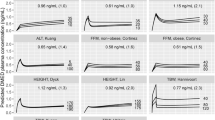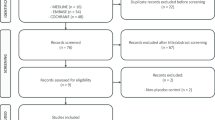Summary
The prevention of anesthetic mishaps during endoscopic procedures is of great importance to physicians in training. With the large number of such procedures performed each year, even infrequent adverse anesthetic reactions may result in a significant number of problems. To establish the safety and efficacy of an anesthetic regimen using intravenous meperidine and diazepam, all endoscopic procedures performed at one teaching institution in a 4-month period were retrospectively analyzed with regard to: (1) type and dosage of sedation/anesthesia, (2) endoscopic procedure involved, (3) effect of any underlying disease state, (4) side effects, (5) endoscopic complications, and (6) overall patient acceptance. A total of 716 patients underwent 913 endoscopic procedures with 876 separate anesthetic/intravenous sedations. General anesthesia was utilized in 44% of the 155 pediatric procedures. In the adult patients, intravenous sedation was administered by a physician-in-training under supervision except in 9% of cases (66 patients) when intravenous sedation utilizing alternative agents was given by the anesthesia department. The dose of sedation used (per body weight) declined with increasing age in the pediatric group (0–19 years). The adult dose remained constant for the next eight decades of life (meperidine 0.76±0.33 mg/kg; diazepam 0.12±0.08 mg/kg). In the adult group, 758 procedures were performed: 371 patients underwent esophagogastroduodenoscopy, 258 colonoscopy, 36 endoscopic retrograde cholangiopancreatography, 40 flexible sigmoidoscopy, and 51 percutaneous endoscopic gastrostomy. Anesthetic-related complications (transient apnea and itching), were noted in two patients, and naloxone was utilized to reverse oversedation in a further 17 (2.56%). Three perforations occurred [two colonic, one esophageal (0.42%)] and were recognized immediately. Overall, patient acceptance of intravenous sedation was good (86%). Thus, intravenous sedation utilizing meperidine and diazepam has been shown to be reproducible, safe, and very effective during endoscopic training.
Similar content being viewed by others
References
Al-Atrakchi HA (1989) Upper gastrointestinal endoscopy without sedation: a prospective study of 2,000 examinations. Gastrointest Endosc 35: 79–81
Beavis AK, LaBrooy S, Misiewicz JJ (1979) Evaluation of one-visit endoscopic clinic for patients with dyspepsia. Br Med J 1: 1387–1389
Boldy DAR, Lever LR, Unwin PR, Spencer PA, Hoare AM (1988) Sedation for endoscopy: midazolam or diazepam and pethidine? Br J Anaesth 61: 698–701
Cantor DS, Baldridge ET (1986) Premedication with meperidine and diazepam for upper gastrointestinal endoscopy precludes the need for topical anesthesia. Gastrointest Endosc 32: 339–341
Cavallo G, Cuomo R, Viscardi A, Capalbo G, Migliociro A, Budillon G (1985) Hypnosis for upper gastrointestinal endoscopy. Gastrointest Endosc 31: 228
Cole SG, Brozinsky S, Isenberg JI (1983) Midazolam, a new, more potent benzodiazepine, compared with diazepam: a randomized, double-blind study of pre-endoscopic sedatives. Gastrointest Endosc 29: 219–222
Cook PJ, Bennett PN, Lennard-Jones JE, Warnes TW (1978) Premedication for endoscopy: a trial of atropine, pentazocine, or pethidine as a supplement to diazepam. Scand J Gastroenterol 13: 33–39
Cotton PB, Williams CB (1982) Practical gastrointestinal endoscopy. Blackwell, Boston, pp 20–22
Fleischer D (1989) Monitoring the patient receiving conscious sedation for gastrointestinal endoscopy: issues and guidelines. Gastrointest Endosc 35: 262–266
Gilman AG, Goodman LS, Rall TW, Murad F (1985) Goodman and Gilman's, The pharmacological basis of therapeutics, 7th edn. McMillan, New York, p 269
Hoare AA, Hawkins CF (1976) Upper gastrointestinal endoscopy with and without sedation: patient's opinion. Br Med J 2: 20
Kjaergard H, Nordkild P, Geerdsen J, Dyrberg V (1986) Anesthesia for colonoscopy. An examination of the anesthesia as an element of risk at colonoscopy. Acta Anaesthesiol Scand 30: 60–63
Lavies NG, Creasy T, Harris K, Hanning CD (1988) Arterial oxygen saturation during upper gastrointestinal endoscopy: influence of sedation and operator experience. Am J Gastroenterol 83: 618–622
Lee MG, Hanna W, Harding H (1989) Sedation for upper gastrointestinal endoscopy: a comparative study of midazolam and diazepam. Gastrointest Endosc 35: 82–84
Lieberman DA, Wuerker CK, Katon RM (1985) Cardiopulmonary risk of esophagogastroduodenoscopy — role of endoscope diameter and systemic sedation. Gastroenterology 88: 468–472
Magni VC, Frost RA, Leung JWC, Cotton PB (1983) A randomized comparison of midazolam and diazepam for sedation in upper gastrointestinal endoscopy. Br J Anaesth 55: 1095–1101
Merry AF, Clapham GJ, Walker JS (1988) The reversal of midazolam sedation with the benzodiazepine antagonist flumazenil (anexate). N Z Med J 101: 571–572
Rimmer KP, Graham K, Whitelaw WA, Field SK (1989) Mechanisms of hypoxemia during panendoscopy. J Clin Gastroenterol 11: 17–22
Ross WA (1989) Premedication for upper gastrointestinal endoscopy. Gastrointest Endosc 35: 120–126
Toft P, Romeu U (1987) Comparison of midazolam and diazepam to supplement total intravenous anesthesia with ketamine for endoscopy. Can J Anaesth 34: 466–469
Author information
Authors and Affiliations
Additional information
This work was completed at the Mount Sinai Medical Center, Cleveland, Ohio
Rights and permissions
About this article
Cite this article
Andrus, C.H., Dean, P.A. & Ponsky, J.L. Evaluation of safe, effective intravenous sedation for utilization in endoscopic procedures. Surg Endosc 4, 179–183 (1990). https://doi.org/10.1007/BF02336601
Issue Date:
DOI: https://doi.org/10.1007/BF02336601




